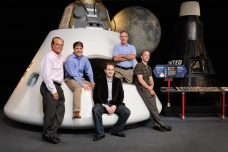The startup DataXu utilizes software, initially designed to be used on NASA space missions, in order to show customers the most relevant ads online. DataXu which was founded the MIT alumnus Bill Simmons and Sandro Catanzaro leverages the big data about consumer demographics behavior in order which to help companies receive the largest ROI possible. The software analyzes past online behavior and preferences as well as utilizing data from third party sources regarding the users demographic, general interests, and purchase history. DataXu instantly analyzes all of this data to determine the specific ad from their large group of potential clients that will spur the user to take action, whatever that may be.
 Advertising and marketing have by no means been an exact science throughout its history. The data regarding Return on Investment was largely an approximation, and took months to collect. This has changed dramatically as DataXu has the capability of precisely measuring ROI numbers. They are trying to break advertising down to a science and remove its uncertainty. Companies are apparently eager to employ such an approach as DataXu boasts such as Ford, Lexus, and 3M. The results speak for themselves. Ford experienced a twenty percent jump in online shopping outcomes with DataXu services.
Advertising and marketing have by no means been an exact science throughout its history. The data regarding Return on Investment was largely an approximation, and took months to collect. This has changed dramatically as DataXu has the capability of precisely measuring ROI numbers. They are trying to break advertising down to a science and remove its uncertainty. Companies are apparently eager to employ such an approach as DataXu boasts such as Ford, Lexus, and 3M. The results speak for themselves. Ford experienced a twenty percent jump in online shopping outcomes with DataXu services.
The DataXu software was originally created by Simmons and Catanzaro while studying systems architecture with MIT Professor Ed Crawley. The team originally designed the software for NASA to determine the most practical manned missions to Mars. They narrowed down the count of feasible missions to just 1,162 from the original 35 billion potential options. The most impressive feature of this software was actually its speed. Normally, it would take quite some time to analyze all 35 billion options. But the software quickly eliminated options that were clearly unfeasible. This is what separates them from the pack, especially in the world of online advertisements in which things happen in a matter of milliseconds. NASA was mightily impressed by the team’s work as have been the customers of DataXu.
